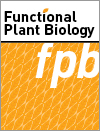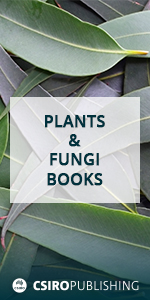Although cotton (Gossypium hirsutum) has high salt tolerance, its growth is still affected by salt stress. Salt-tolerant cotton varieties protected the cell membrane structure by maintaining high antioxidant enzyme activity, low malondialdehyde content and electrolyte leakage. Thus, the normal physiological metabolism and photosynthetic system are maintained to confer high salt tolerance. This study provides clarification of the physiological mechanism of salt tolerance of cotton seedlings for growth on saline-alkaline land.

Functional Plant Biology
Volume 52 Number 5 2025
Herbicides are critical for weed management, but options are dwindling given the continuous rise in herbicide-resistant weeds. This review describes the potential of targeting lysine production in weeds as a novel herbicide mode of action. Such new herbicide modes of action are urgently needed for sustainable agricultural productivity to ensure food security.
FP25030 Abstract | FP25030 Full Text | FP25030PDF (2.6 MB) Open Access Article
The CO2 level in the air is an important factor affecting plant productivity. The present study shows that acclimation of Arabidopsis to both elevated and reduced CO2 levels had similar negative effects on the function of the photosynthetic electron transport chain in higher plants. The results can help in the development of future strategies for genetic modification to offset the negative impact of changes in the air CO2 content in any direction.
This study is important because it identifies a potential genetic approach to enhance plant resistance against Alternaria blight (Alternaria burnsii), a disease causing severe economic losses. By demonstrating the role of PdCCoAOMT in lignin biosynthesis and disease mitigation, it offers a novel strategy for crop protection. The findings could contribute to the development of resistant crop varieties, reducing yield losses and improving agricultural sustainability.
This article belongs to the collection: Functional Genomics for Developing Climate Resilient Crops - Volume II.
Cytoplasmic male sterility and fertility restoration is an important component of hybrid seed industry in rapeseed (Brassica napus), while its genetic and molecular mechanism is not yet clear. In this review, we discuss male sterility resources in rapeseed and modes of sterility induction, providing updated information of various CMS in Brassica and its implications in hybrid breeding.
Balanced nutrition ensures healthy growth in crops like wheat (Triticum aestivum) and other staple foods by improving nutrient use efficiency that is related to maximising yield while safeguarding natural resources and reducing environmental pollution. Improving nutrient use efficiency by crop breeding usually requires a lot destructive plant sampling and costly chemical analysis. Here, we propose a new method to significantly reduce the destructive sampling and support the breeding of more N efficient crops.
FP24201 Abstract | FP24201 Full Text | FP24201PDF (1.7 MB) | FP24201Supplementary Material (542 KB) Open Access Article
Polytrichum commune, a common moss, exhibits a distinct colour difference (green in shade and yellow-green in sun) within the same community. This study addressed the key question why the moss shifts its colour depending on light conditions and clarified how the moss changes its pigment composition and enhances photoprotection, leading to the colour shift. These findings highlight the intricate mechanisms plants use to thrive in varying light conditions, which could inspire advancements in plant science and ecology.
Light both supplies plants with energy and informs them of the environmental light conditions. Light information is obtained by an elaborate receptor system, which includes phytochromes. Phytochrome A, a major photoreceptor, was investigated, confirming its structural and functional heterogeneity and showing that the adaptation of a plant to the light environment includes redistribution of phytochomes between its native populations via their inter-transformations. This optimizes physiological processes in a plant, providing higher plants with evolutionary advantages.
Agriculture productivity depends on water availability. Crop water use efficiency can be increased by deficit irrigation but the effect may be influenced by light quality and quantity. This review explores overlapping signalling pathways and important bioactive molecules in plants under these factors. Plant responses to water deficit vary with light intensity and spectrum (UV, blue, red). Optimising horticultural production through controlled light and deficit irrigation shows promise, but further research is needed to enhance resource efficiency and crop nutritional value.
Freeze-thaw, alkaline salt, and Solanum rostratum Dunal often have adverse effects on the stability of grassland ecosystem in north-east China. Combined stress of freeze-thaw, alkaline salt, and S. rostratum extract have obvious physiological damage to rye (Secale cereale) seedlings. During periods of frequent freeze-thaw, it is important to implement timely and targeted control measures against S. rostratum to reduce the adverse effects of combined stress on grassland ecosystems.





